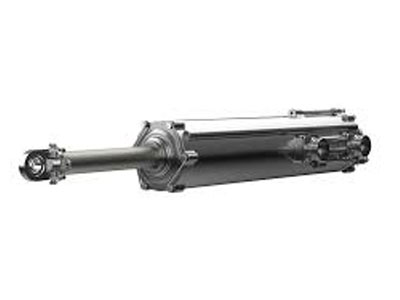What Is The Purpose Of The Actuator?
Key Takeaway
An actuator’s purpose is to convert energy into motion, enabling machines or devices to move or control systems. It takes energy from sources like electricity, air (pneumatic), or oil (hydraulic) and turns it into mechanical force. This motion can be linear, rotational, or even bending. Essentially, an actuator is the part of a machine that makes movement possible.
Actuators are used in countless applications. They power robots, allowing joints to move. In cars, they adjust seats or steer radio-controlled models. Construction equipment uses actuators for extending and retracting movements, like in power shovels. Even motorized wheelchairs rely on actuators for movement and positioning. The type of actuator—pneumatic, hydraulic, or electric—depends on the application’s needs, such as the level of force, speed, or durability required.
Defining the Role of Actuators
At its core, an actuator is a device that converts energy into motion. Think of it as the bridge between a control signal and the physical movement or force needed to accomplish a task. It takes a signal—be it electrical, hydraulic, or pneumatic—and translates it into action.
Actuators are the driving force behind countless systems. From opening a valve in a manufacturing line to moving robotic arms in an assembly plant, actuators perform the critical job of turning plans into reality. Without them, automation and industrial systems would remain static and ineffective.
Engineers value actuators for their ability to deliver precision and reliability. They allow systems to respond instantly to commands, ensuring smooth and controlled operations. Whether you’re working with small-scale devices or massive industrial machinery, actuators play a key role in making everything work seamlessly.

How Actuators Enable Motion
Motion is the essence of what actuators do. By harnessing different energy sources—electricity, fluid pressure, or air—they generate the power needed to create linear or rotational movement.
Linear actuators move objects in a straight line, making them ideal for tasks like pushing, pulling, or lifting. Rotary actuators, on the other hand, focus on rotational motion, used for turning valves or positioning components in complex systems.
The versatility of actuators in generating motion is astounding. Hydraulic actuators are often used for heavy-duty tasks requiring immense force, such as lifting cranes or controlling large industrial presses. Pneumatic actuators, meanwhile, offer lightweight and quick movement, perfect for packaging lines or automated assembly systems.
What makes actuators particularly fascinating is their ability to combine speed, force, and precision. Imagine a robotic arm assembling electronics. Each tiny motion it makes is powered by actuators, ensuring flawless results every time. For engineers, mastering how actuators enable motion is fundamental to designing efficient systems.
Importance of Actuators in Automation
Automation thrives on precision, and actuators are at the heart of it. They make automated systems possible by performing tasks that once required manual effort, boosting efficiency and consistency.
Imagine an assembly line producing thousands of identical products daily. Actuators ensure that every motion—be it cutting, pressing, or transporting—happens with pinpoint accuracy. This eliminates errors and reduces waste, leading to significant cost savings for industries.
Beyond industrial settings, actuators also power automation in areas like healthcare, transportation, and even smart homes. They enable surgical robots to perform intricate procedures and ensure self-driving cars react instantly to their environment.
The role of actuators in automation cannot be overstated. For engineers, understanding their purpose means grasping how to make systems smarter, faster, and more reliable. In a world where efficiency is key, actuators pave the way for innovation.
Common Applications of Actuators
Actuators are everywhere, driving operations across industries. In manufacturing, they control conveyor belts, robotic arms, and packaging machines. These devices streamline production processes, ensuring consistent output and quality.
In the energy sector, actuators regulate valves in oil and gas pipelines, safeguarding operations and preventing leaks. Similarly, they are integral to renewable energy systems, such as adjusting solar panels to maximize sunlight absorption.
Healthcare is another area where actuators shine. They power devices like prosthetics, enabling smooth and natural movements for users. In surgery, they allow robotic systems to perform precise and minimally invasive operations, improving patient outcomes.
Actuators also play a key role in everyday life. Automatic doors, HVAC systems, and even the seats in your car use actuators to provide comfort and convenience. Their applications are so vast that it’s hard to find an industry untouched by their utility.
For engineers, understanding the breadth of actuator applications opens up endless possibilities for innovation and problem-solving.
Factors for Selecting an Actuator
Choosing the right actuator is not a one-size-fits-all task. Engineers must consider several factors to ensure optimal performance for a specific application.
First, determine the type of motion required—linear or rotary. Linear actuators work best for straight-line tasks, while rotary actuators handle rotational movement. Next, consider the energy source. Electric actuators are precise and clean, hydraulic ones offer immense power, and pneumatic actuators are lightweight and fast.
The environment is another crucial factor. Will the actuator operate in extreme temperatures, underwater, or in a corrosive atmosphere? Materials and design must align with the operating conditions.
Load capacity, speed, and precision are equally important. A poorly chosen actuator can lead to inefficiency, wear and tear, or even system failure. For engineers, selecting the right actuator is not just about functionality but also about reliability and cost-effectiveness.
By paying attention to these factors, you can ensure the actuator you choose meets the demands of your application, delivering performance and longevity.
Conclusion
Actuators are the lifeblood of motion, automation, and efficiency. They take control signals and bring them to life, driving systems across industries. From enabling motion and streamlining automation to powering diverse applications, their importance cannot be overstated.
As an engineer, understanding the purpose and functionality of actuators equips you to design systems that are efficient, reliable, and innovative. With actuators, the possibilities for motion and automation are endless.
